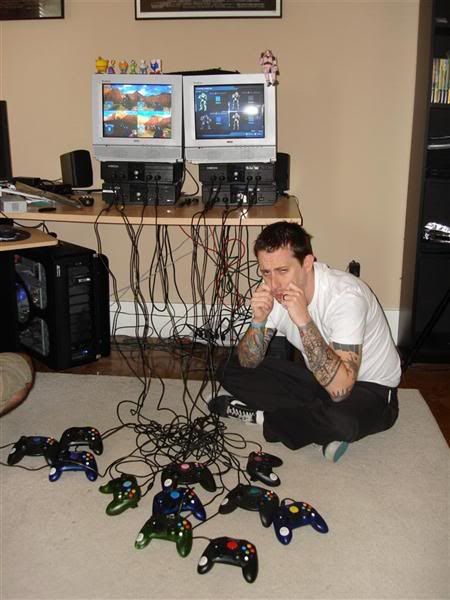According to the humorous and only slightly exaggerated history Red Vs. Blue has posted on their site, the series is "a movie INSIDE of a video game." Quite literally, the characters, locations and props are all contained within the universe of the game. The movie is shot using a game console equipped with a video capture card, with all of the action taking place inside of normal, everyday television. There are no physical cameras or crews working on an elaborate soundstage. Instead, the crew sits inside of normal office, and record their lines amongst the clothes and hats of creator Burnie Burn's closet.
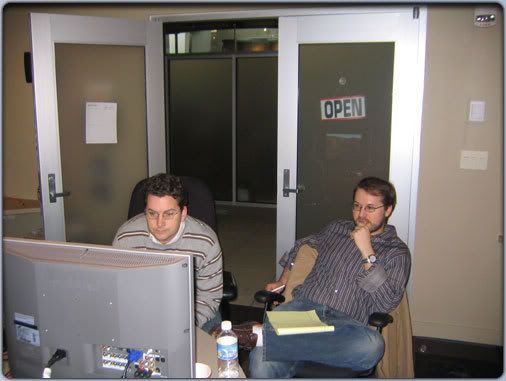
Courtesy of Bungie.net. Creators Burnie Burns and Matt Hullum work on an episode of Red Vs. Blue.
Which leads to some very interesting questions...
I. "We call him CameraMan."
If you're creating a movie within a game, where the hell is the camera? Machinima is created within the confines of a game and so, there is no physcial camera to hold, no film to process. Producers must use the camera provided by the game to film the footage. In the case where the camera provided by the game is in the third person (the camera shows the character you control from outside of their body, as well as your surroundings) filming footage is realitivly simple. The producers can control the camera angle to fit the action taking place on the screen.
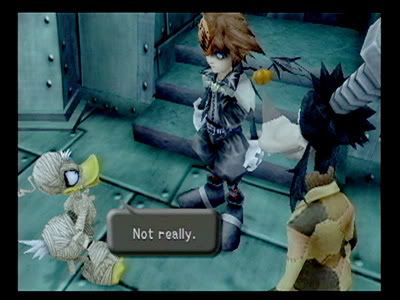
Kingdom Hearts. An example of the third person camera.
However, when the game being used is a first person camera, the production becomes much more difficult. The camera is controlled by moving a character, and the action is seen through that character's eyes.
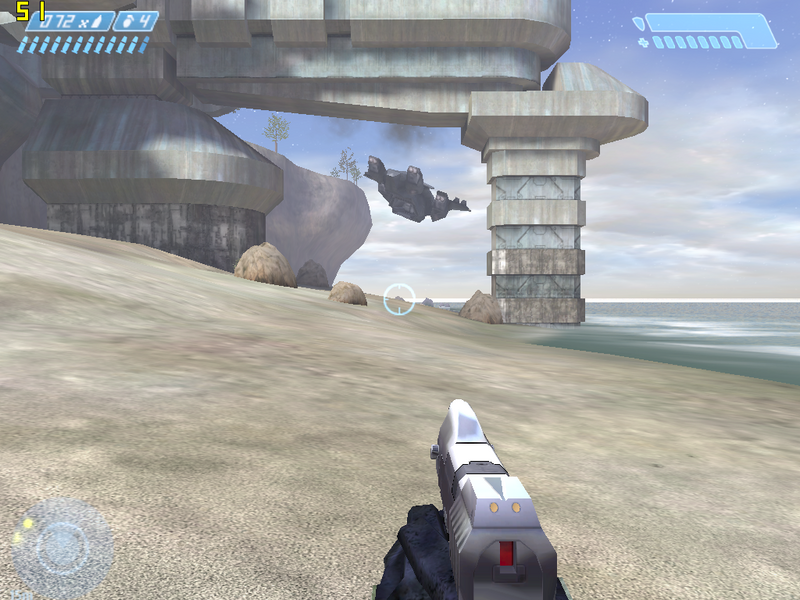
Halo. An example of the first person camera.
Although this provides decent control of the camera, a large problem remains. Many games shot using first person make use of a HUD, or Heads-up display.
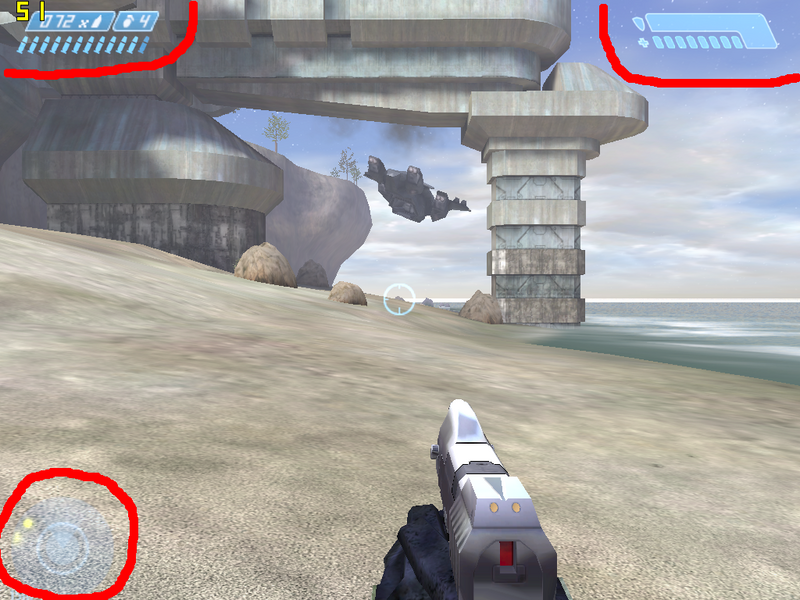
Halo. Aspects of the HUD are highlighted.
The HUD typically contains in game information such as health, ammo and location. For the purposes of machinima, This is problematic. Being able to see the HUD and weapon of the character makes it clear that the camera actually is a character in the game. For producers, this poses a question: Do we make the camera a character in the show, or do we ignore the HUD and take away some of the video's quality as a movie?
The creators of RvB faced this very same question when they chose to use Halo as thier graphics engine. Although the crew considered making the camera character, they ditched the idea when a better solution presented itself. Letterboxing.
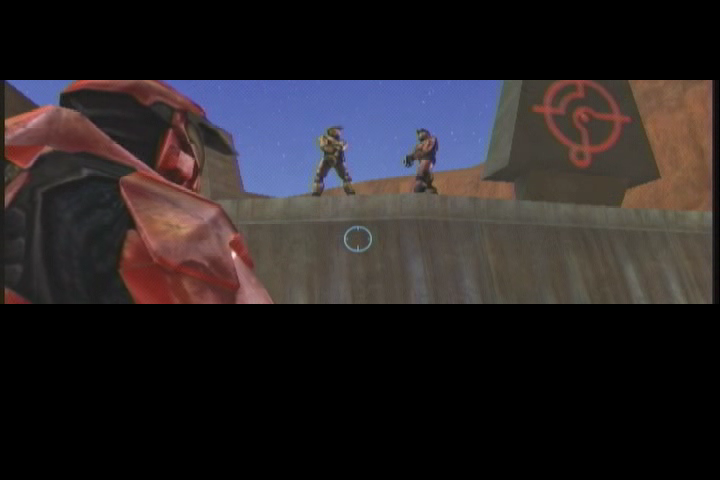
A scene from RvB. The HUD is eliminated by using letterboxing on the top and bottom. However, the crosshair remains.

